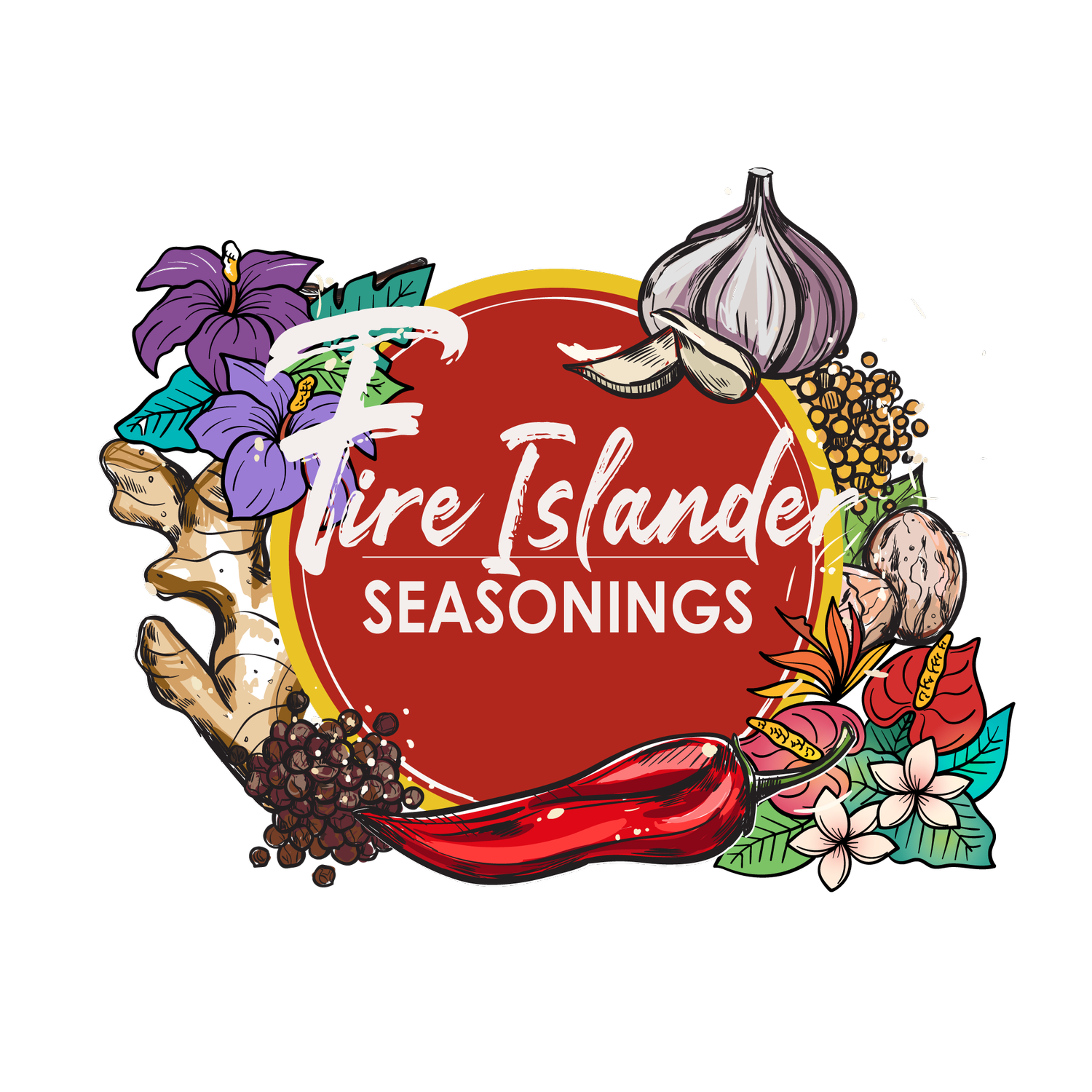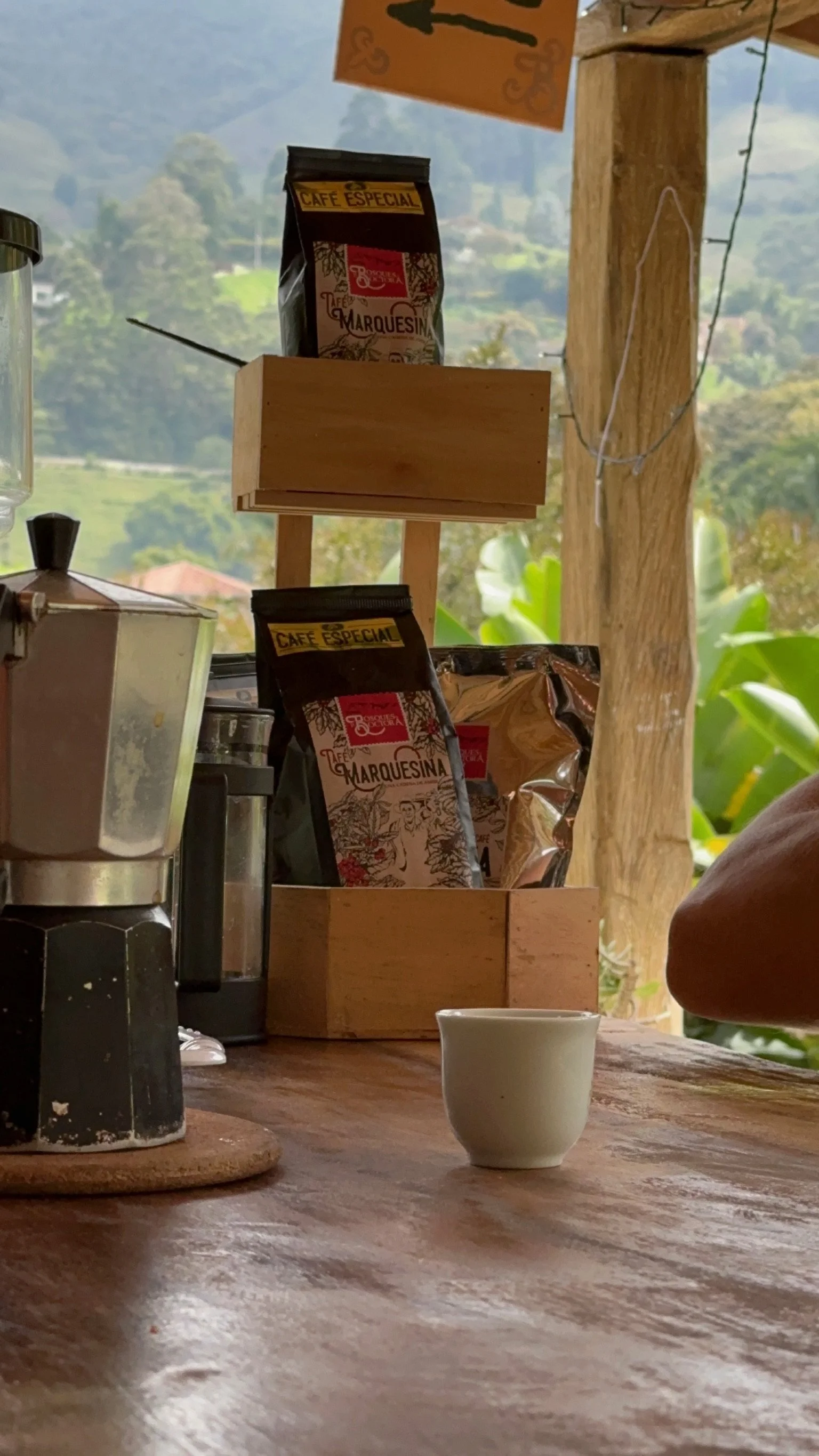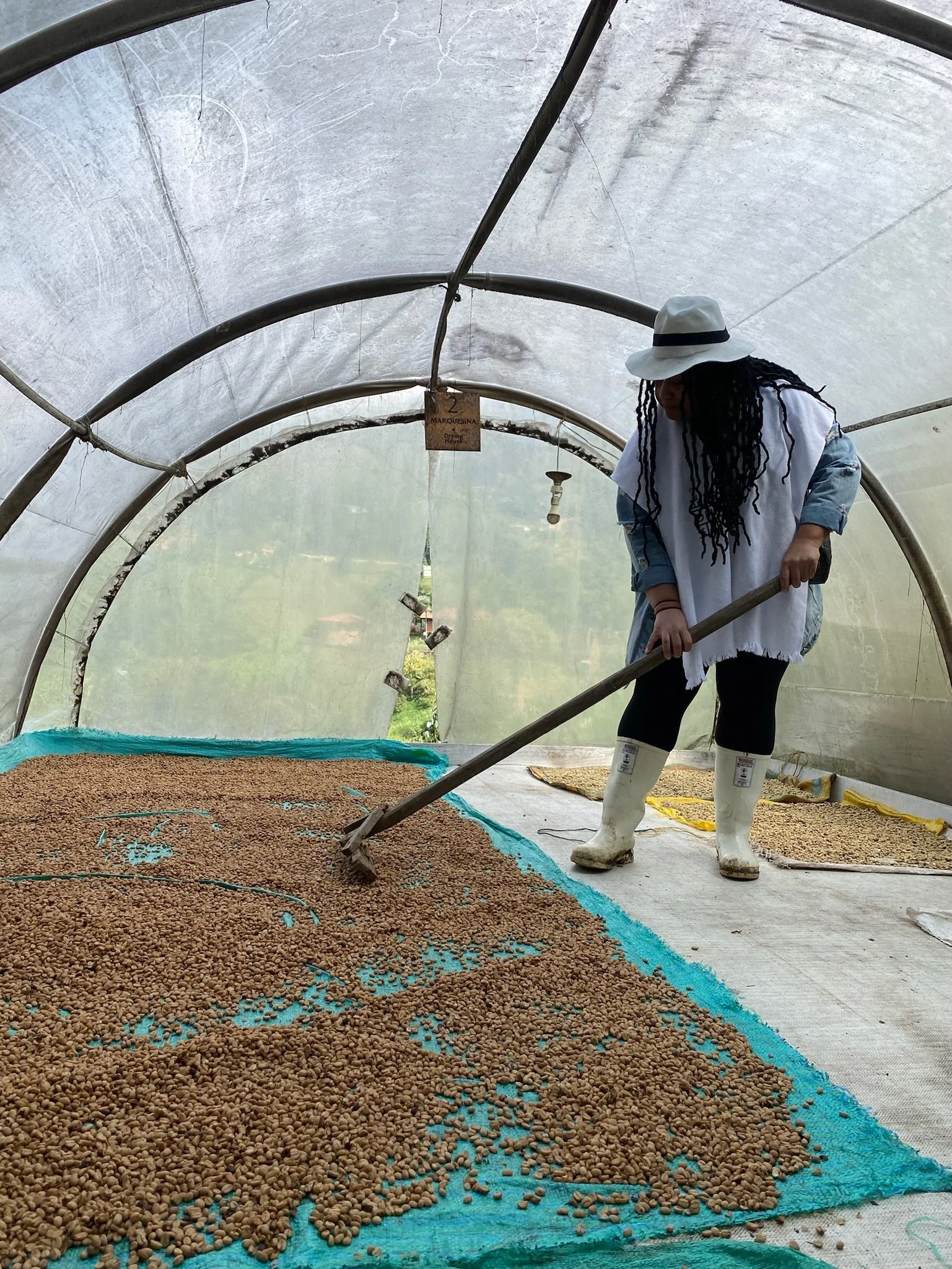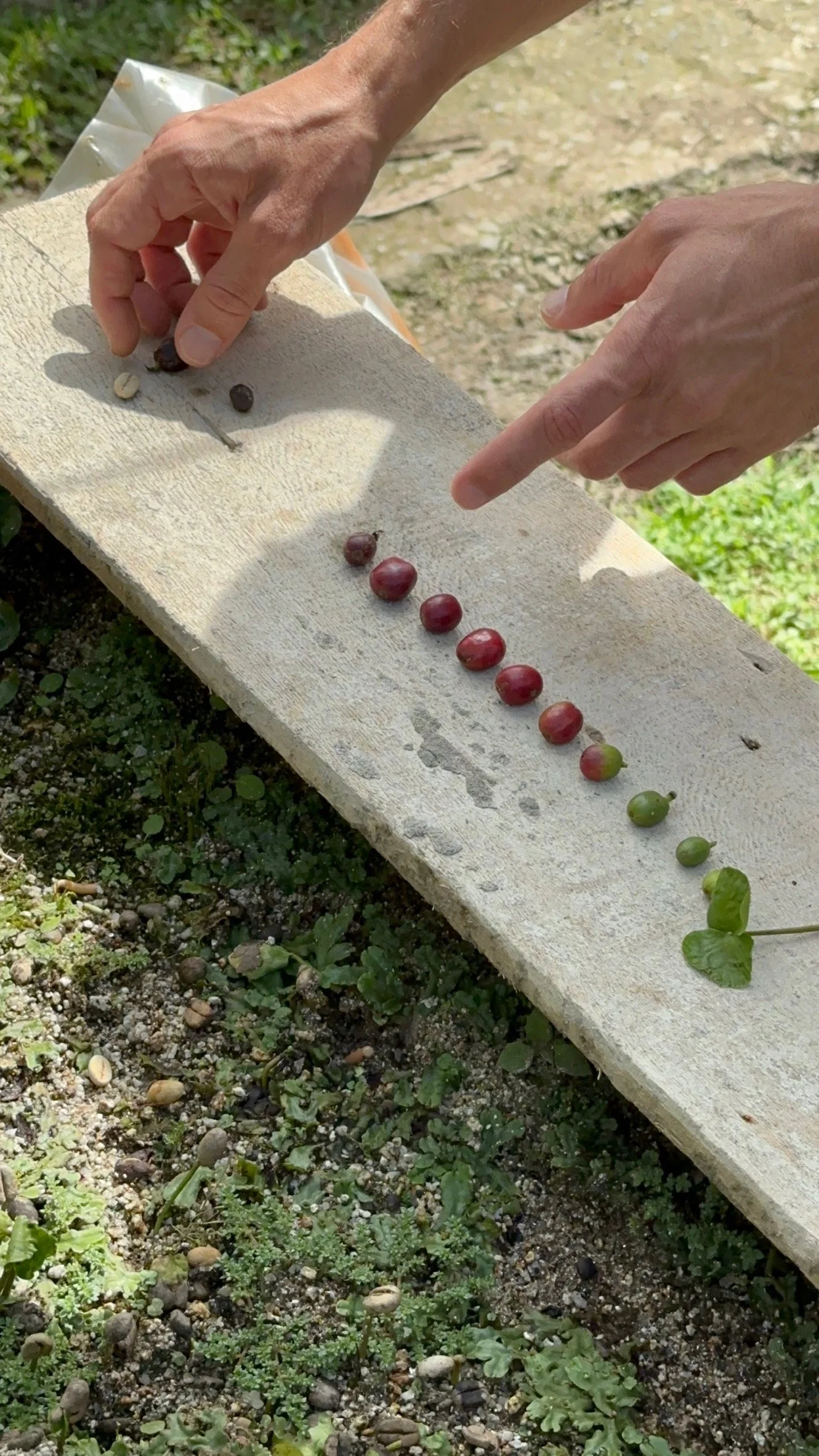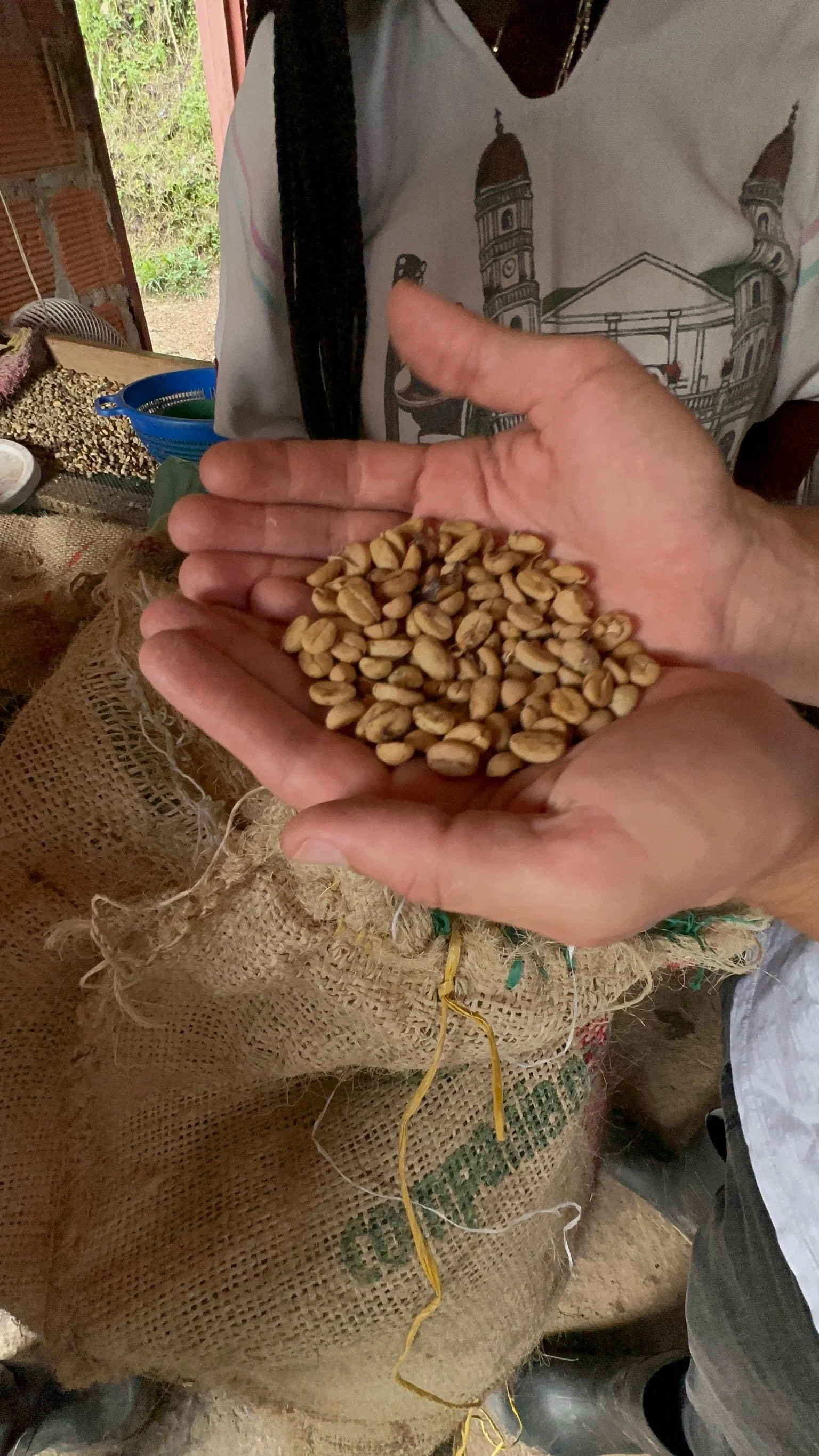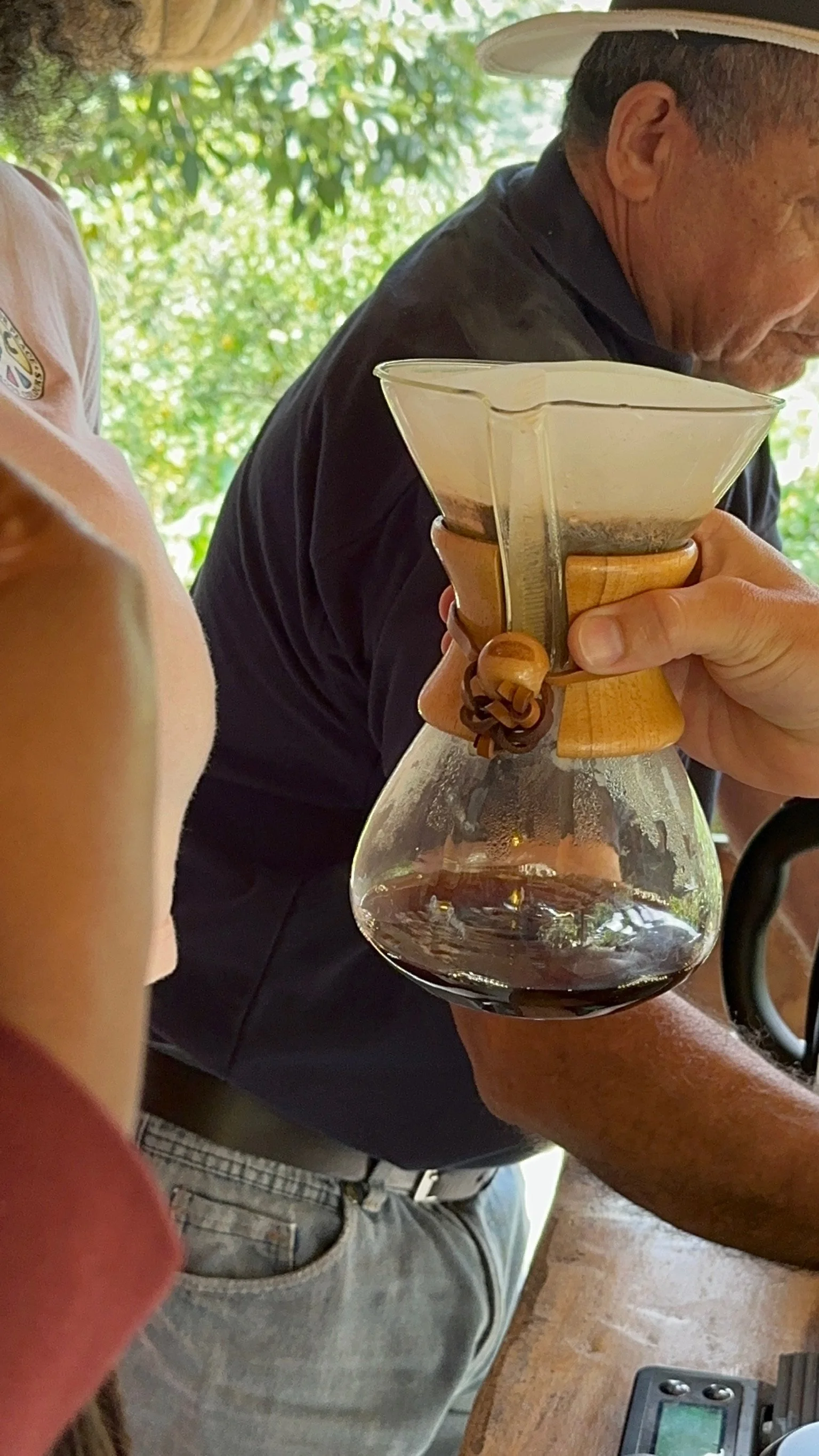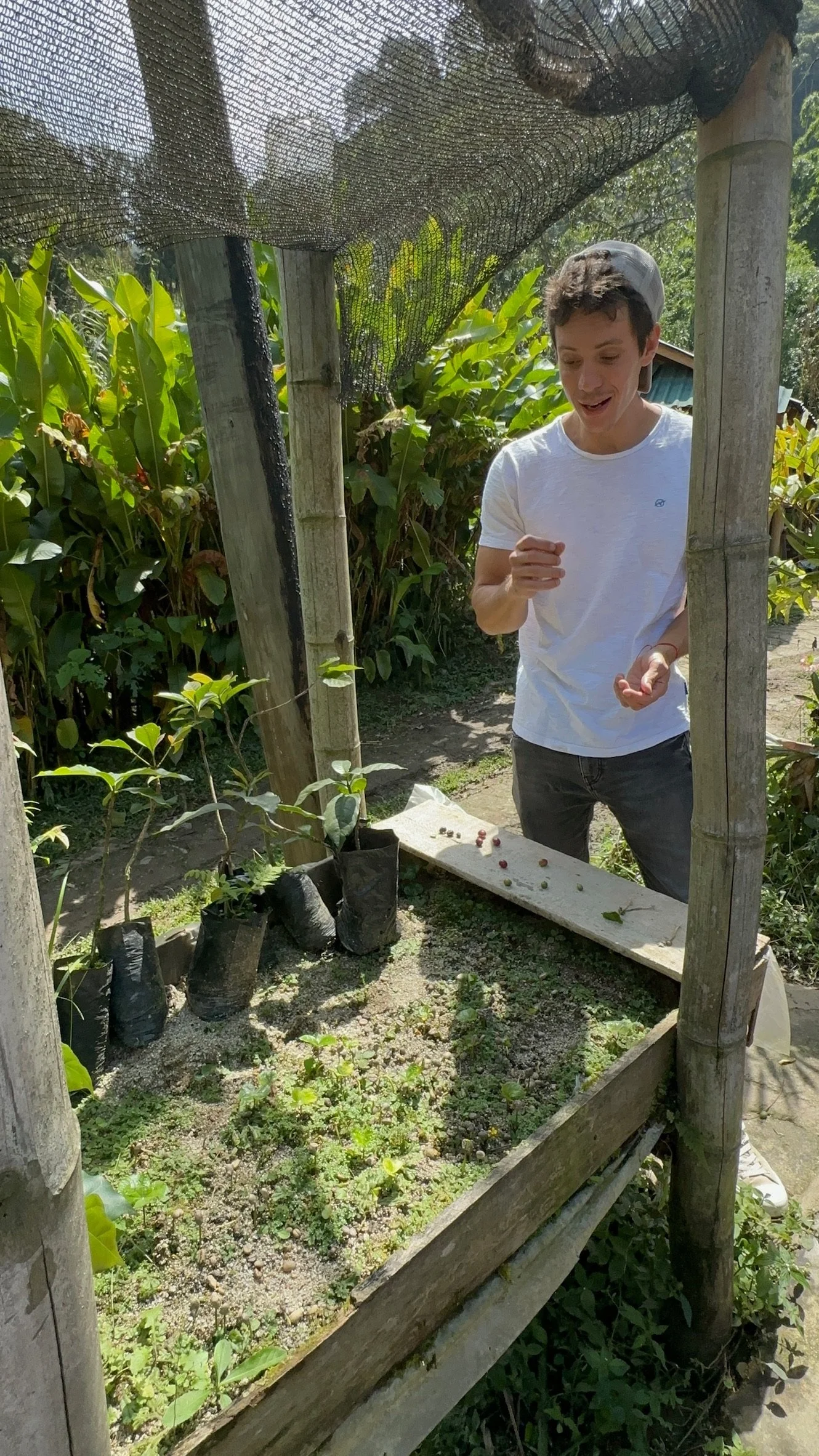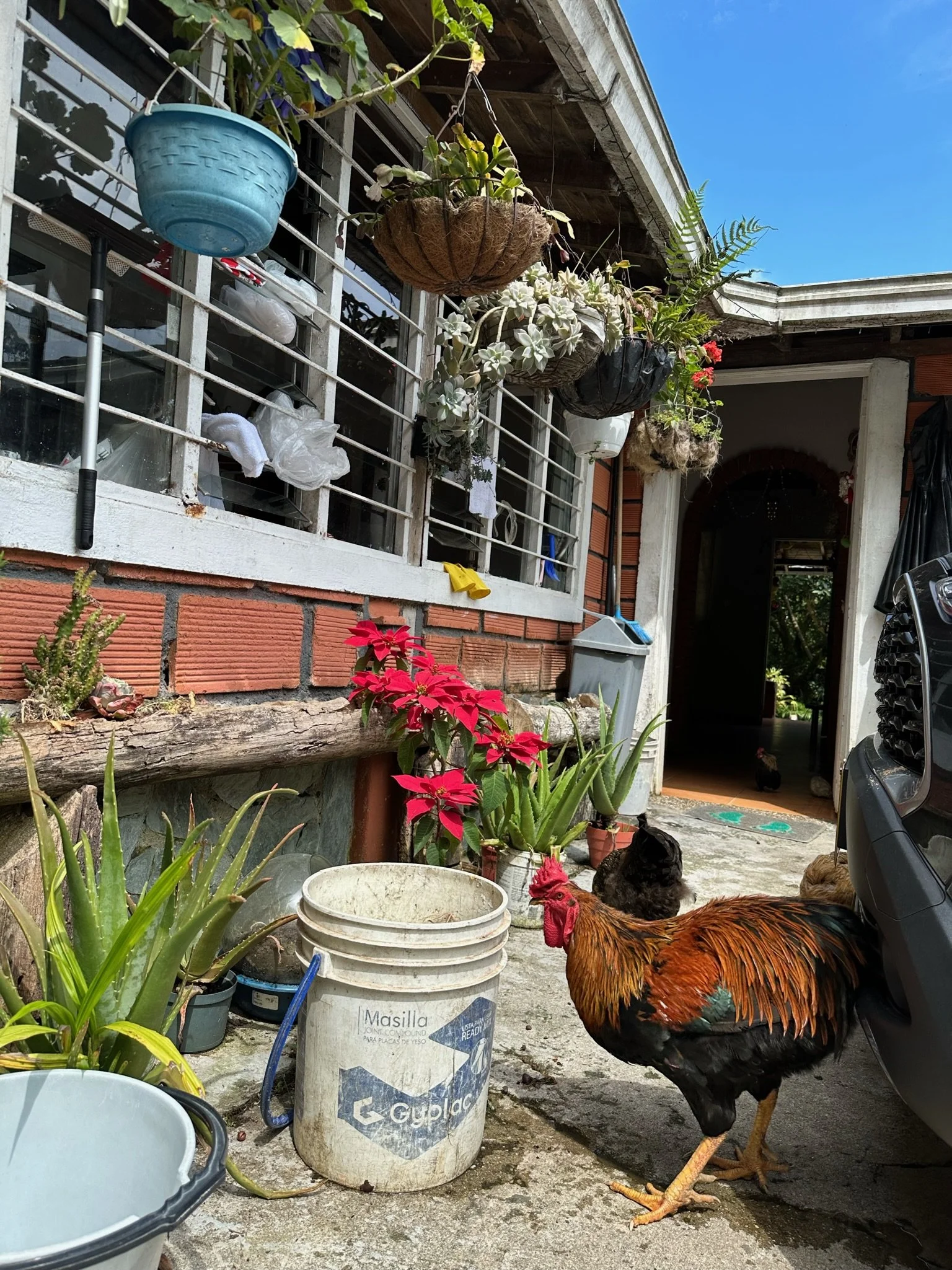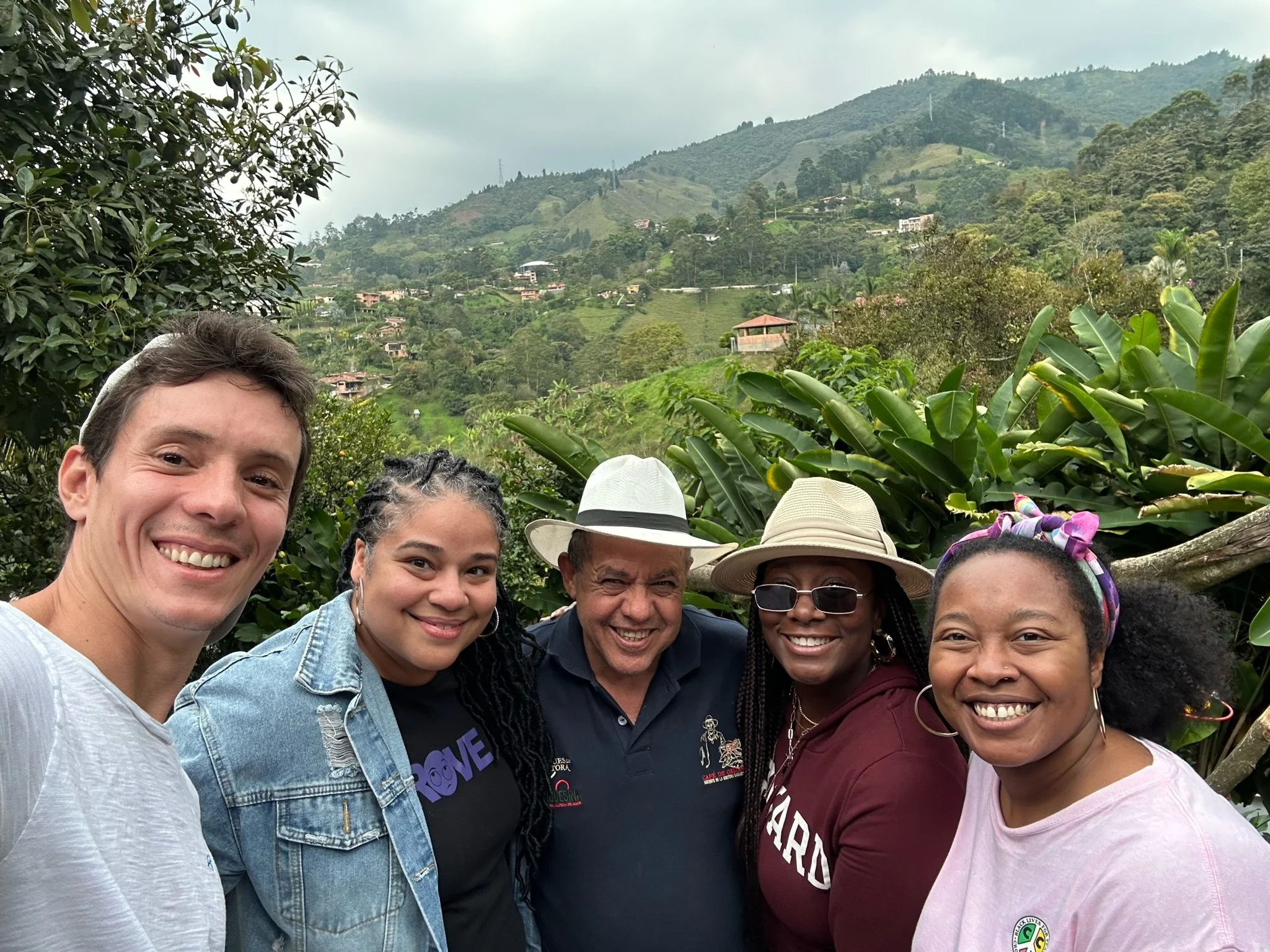COLOMBIA’S COFFEE OF LOVE
¡Bendición familia!
In 2022 I finally left the country! If you know anything about me, you know one of my greatest passions next to food, is traveling. If I don’t travel internationally enough, I get claustrophobic and stir crazy. I tend to plan a whole trip around the exposure to the ocean and the local culinary scene. I prefer to visit new places without sticking out like a typical tourist. I like to try to blend in as much as possible and do what the locals do. The last time I left the country was in 2018. This time I went to South America - Colombia queridos. You’re probably thinking what some of my family members thought when I said I was going to Colombia. But things have changed, and I knew it was time.
In December of 2022 I went to Cartagena which is on the coast of the Caribbean Sea, with a small quick trip in the middle to Medellin. Colombia is known for many things, but two of its well known attractions are emeralds and coffee. I got to experience both.
Colombia is the #1 distributor for emeralds and the best place to purchase them not only from a market price standpoint, but also from a quality standpoint. I will definitely share this story in the near future with pictures to accompany it.
The second attraction Colombia is known for, is having the world's best arabica coffee. This is not an opinion, but an actual fact. Just like wine, coffee has the Specialty Coffee Association of America (www.scaa.org) that has quality and rating standards. Many westerners are familiar with the Juan Valdez brand. Juan Valdez is Colombia’s version of Starbucks and is sold through the Colombia Coffee Federation and to the rest of the world.
Up to 10 years ago, the Colombia Coffee Federation monopolized coffee production in Colombia to the point that it restricted local farmers from selling coffee under their own brand. Instead, 10 years ago the law required all farms to sell under the Juan Valdez conglomerate or under one of their sub-brands.The Colombian government got rid of this restriction.
Also like wine, arabica coffee has its own versions of global certified sommeliers rating coffee with a scale ranging from 1 to 100. This score classifies and categorizes the quality and specialty of arabica coffee based on the notes, fragrance, aroma, acidity, sweetness, density, body, soluble composition, flavors, etc. all by certified and qualified experts.
Anything in the quality range of 1 to 60 is called pasilla - which is the lowest grade of coffee. It is what most Colombians primarily drink because of the Coffee Federation. Contrary to belief, our tour guide stated there is not a real coffee culture in Colombia.
Our trip started by taking a quick 1-hour ride from Cartagena to Medellin where we met up with Daniel, our tour guide. He took us to a farm called Bosques De La Doctora en Sabaneta Medellín.
La Doctora consists of nearly 15 acres of protected land and forest with 20K - 25K coffee trees that produce about 4 tons of coffee a year. It’s exclusively owned by Antonio and his elderly wife. 10% of the lower quality coffee, or pasilla, produced on Antonio’s farm is sold to the Colombian Coffee Federation and public market. The remaining 90% is of his special line sold for Antonio’s own personal tourist experience exclusive to his farm. I was thinking of you all, my audience, and got to cop Antonio’s “excellent special top-tier quality coffee” in the entire world for a special giveaway on my social media page - stay tuned for more information soon.
What makes Antonio’s coffee top tier according to the Specialty Coffee Association?
I established that 1 - 60 is pasilla, or the lowest grade and quality of coffee.
Between 60 and 80 is traditional coffee - middle range quality
80 and 85 - good special coffee
85 and 90 - excellent special coffee
Anything above 90 is exceptional coffee and can be priced for hundreds or thousands of dollars per pound.
Antonio’s coffee ranges 85.7 on the quality and specialty range. This is extremely special! And I can’t wait to do this giveaway and share with you.
Antonio bought the land with several coffee trees, he exclusively owns this farm and deeply dove into studying the process of not only growing coffee, but also farming and creating it. Antonio has only started producing his coffee since 2012. In 2017, with the furthering of his personal experimentation, he produced his exclusive “excellent special special top-tiered coffee” that is not available on the public market.
I had the opportunity to learn and experience a few methods of filtering coffee that can entirely determine different notes, flavors, aromas, etc of the same coffee. Each method is contingent upon the instrument or device of filtering coffee. The Italian moka pot method, which most of us are familiar with the steel kettle that is placed on the stove top burner, was my favorite. It was robust, full bottle and not bitter to my palate. I tasted dark chocolate, wine, wood and nuts. The second method was using the chemex where we saw the benefit of foaming indicating the coffee is fresh. Instead of the darker black color with the first method, we saw a red tinge and fruit notes coming through ranging from acidic to sweet, honey and floral notes. We saw the different stages of the coffee seed and even chewed it and tasted it in its natural unfiltered sweet flavor with natural sugars, and we then planted them in a germinator sand box. In two months, the seed turns into el fósforo del café (or coffee match). In another month, the husk falls, and in the fourth month it blooms into a chapola resembling a Colombian butterfly. In this stage, the germinating plant is removed from the sandbox and inspected for straight roots to determine if they pass on to the next stage of being bag with special soil and compost made up of fruit, coffee parts, etc. By 6-7 months these are ready to be planted strategically on the mountain with flowers potentially producing a coffee fruit from green to deep red would be optimal for picking.
We took a break to change into rain boots, hats, ponchos and buckets around our waist and do some hiking up the mountain. We walked just over a quarter of a mile in mud, little baby streams and rocks up the steep terrain and picked red ripe coffee fruit. Surrounded by natural fruit trees and vegetation. I was breathing hard, competing to get as many in the bucket as possible, very slippery, hot, humid, even stepping in poop but so iconic, memorable and enriching. I would do it all again! Daniel took us step by step of the machine harvesting process of disinfecting and pouring our coffee through to the machine separating skin from the seed. A separator with water would filter the “good” or ripe from the “bad” unripe seeds. The skin of the bad seeds would be used for compost or coffee tea. Most of this process from start to finish is manual. The “good” coffee is slimy and light in color allowing it to ferment between 20 and 300 hours, and different types of washes for different levels of sweetness flavor in the coffee. They dry the coffee through natural sunlight and in a greenhouse called marquesina, which is also the name of the brand of coffee, and by spreading it around several times a day. We stepped into the marquesina and spread the coffee around contributing to the drying process. Another noisy machine separates the husk from the bean and is what is mainly exported and the whole beans.
We then had the privilege of seeing coffee being roasted - which only takes place once a week at Bosques de La Doctora. The aroma was filling my nostrils of both the traditional and Antonio’s excellent special roasted coffee. Least to say collectively my friends and I took away several dozen bags of coffee - because we didn’t know when we would be back again.
Daniel was informative, fun, educated, articulate guide of our age group. Señor Antonio and his wife were so humble, kind and welcoming and open with their home and farm. I felt like I was back at my abuela’s house with roosters crowing and chickens and dogs running everywhere drinking coffee snacking on some typical amuse bouche - which was a sweet plantain covered with creamy white cheese. I didn’t want to leave.
We took pictures and nearly bought out the elder’s ready-made stock of coffee. I breathed in the countryside air and took in every bit of what felt like drinking coffee in my grandmother’s backyard.
